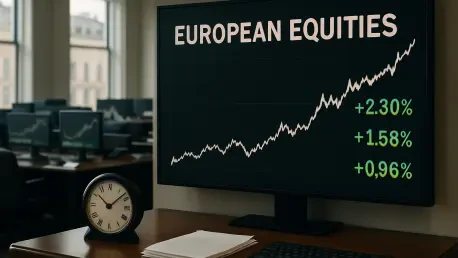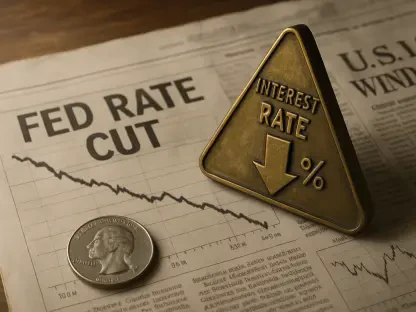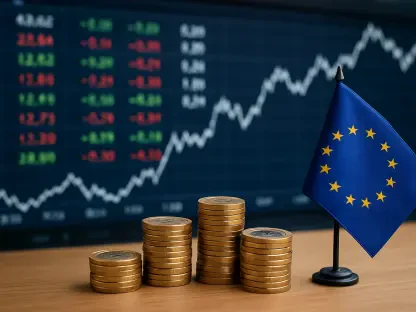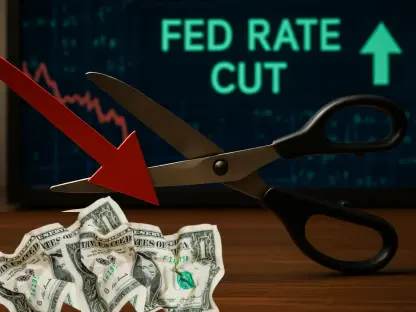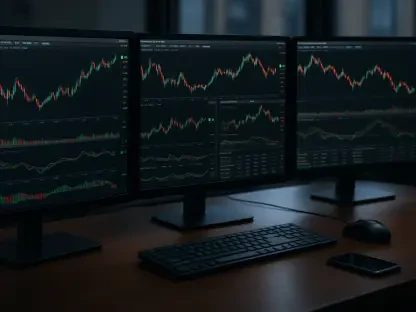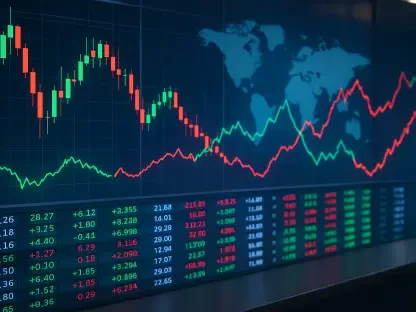European stock markets are experiencing a remarkable wave of optimism as the pan-European STOXX 600 index has surged to its highest level in six months, marking a significant milestone for investors across the continent. As of early October, this rally delivered a striking 2.8% weekly gain, with the index achieving record highs over three consecutive sessions. This surge is not merely a fleeting uptick but a reflection of renewed investor confidence, fueled by growing expectations of interest rate cuts from the Federal Reserve and bolstered by improving economic conditions within Europe. The momentum has also lifted the EURO STOXX 50, which recorded an impressive 5.8% gain over the past month, signaling a broader shift in market sentiment. Despite global uncertainties, such as disruptions in U.S. government operations, the focus remains on the potential for lower borrowing costs to stimulate investment and growth. This development paints an encouraging picture for European equities, drawing attention from global markets and setting the stage for a deeper exploration of the forces driving this upward trajectory.
Monetary Policy Expectations Fueling Market Optimism
The anticipation of a Federal Reserve interest rate cut, expected later this month, stands as a primary catalyst for the recent surge in European equities. Lower interest rates typically reduce borrowing costs for businesses, spurring expansion and investment, which in turn boosts stock prices. This expectation of a softer monetary policy has created a ripple effect across global markets, with European indices like the STOXX 600 benefiting significantly. Even amidst challenges such as delayed U.S. economic data, the optimism surrounding potential rate reductions has taken center stage, overshadowing short-term uncertainties and driving capital into riskier assets like stocks. This global sentiment has proven to be a powerful force, pushing European markets to new heights and reinforcing the interconnectedness of financial systems worldwide.
Moreover, the focus on monetary easing highlights a broader trend of investor confidence in policy-driven recovery. While the Federal Reserve’s actions are pivotal, they also set a precedent for other central banks, including the European Central Bank (ECB), to adopt similar measures. This alignment of global monetary strategies has created a favorable environment for equity markets, encouraging a shift in asset allocation toward regions like Europe, where growth potential appears robust. The sustained interest in stocks over safer investments like bonds underscores the market’s belief in a continuing upward trajectory, provided that central banks deliver on these anticipated policy adjustments. This dynamic remains a critical factor to watch as the month progresses.
Economic Stability Boosts European Confidence
Europe’s own economic landscape is providing a solid foundation for the ongoing rally in equities, with declining inflation and interest rates creating a conducive environment for growth. The ECB has adopted a cautious yet supportive stance, with expectations of a gradual rate-cutting cycle aimed at stimulating economic activity without triggering instability. This approach has reassured investors, making European stocks an attractive destination for capital. The projected acceleration of earnings growth to 12% by next year further strengthens the case for investment in the region, signaling a potential turning point for markets that have faced headwinds in recent times. This combination of factors paints a promising picture for sustained momentum.
Additionally, the improving macroeconomic conditions reflect a broader recovery narrative across the continent. Lower inflation eases the burden on consumers and businesses alike, freeing up resources for investment and expansion. This shift is evident in the growing appetite for European equities, as funds previously parked in other regions or safer assets are redirected toward opportunities in this market. The stability offered by a supportive ECB policy framework also mitigates risks associated with external shocks, providing a buffer against global volatility. As these economic indicators continue to trend positively, the allure of European stocks is likely to grow, drawing both domestic and international investors seeking to capitalize on this upward cycle.
Sectoral Strength as a Driving Force
Certain sectors have emerged as key contributors to the recent rally, with healthcare and mining leading the charge in propelling European equities to new heights. In healthcare, a landmark agreement between Pfizer and the U.S. government to lower prescription drug prices for Medicaid has alleviated long-standing uncertainties around pricing policies. This deal has boosted investor sentiment, resulting in notable gains for companies such as AstraZeneca and Novo Nordisk, which saw share price increases of 1.6% and 2.1%, respectively. The healthcare sector as a whole experienced a 1.3% uptick, reflecting the broader positive impact of resolved policy concerns and the promise of innovation-driven growth in response to demographic trends like aging populations.
Meanwhile, the mining sector has also played a pivotal role, with the Basic Resources index climbing by 1.7% amid soaring base metal prices. A historic 45% surge in gold prices this year, alongside a comparable rise in uranium values, underscores a global demand for safe-haven assets and resources critical to clean energy solutions. These commodity price increases have positioned mining stocks as standout performers, attracting significant investment and contributing to the overall market uplift. The dual strength of healthcare and mining highlights the diverse engines of growth within European markets, demonstrating how sector-specific developments can amplify broader economic optimism and drive indices to record levels.
Strategic Shifts Toward Regional Resilience
A significant long-term trend adding depth to the current market enthusiasm is the emphasis on what has been termed “European sovereignty.” This strategic initiative prioritizes increased investment in critical areas such as defense, cybersecurity, infrastructure, and technology, aiming to reduce dependence on external supply chains and enhance economic independence. Far from being a mere political slogan, this focus is reshaping the investment landscape by directing capital toward sectors deemed essential for Europe’s future resilience. The push for self-reliance is gaining traction among policymakers and investors alike, as it promises to foster innovation and create a more robust economic framework capable of withstanding global disruptions.
Furthermore, the implications of this strategic shift extend beyond immediate market gains, offering a vision of sustainable growth through targeted development. By channeling funds into high-priority industries, Europe is positioning itself as a leader in emerging fields like green technology and digital security, which are expected to drive economic progress in the coming years. This redirection of capital not only supports domestic businesses but also attracts foreign investment seeking exposure to these growth areas. The potential for long-term transformation embedded in this approach is capturing significant attention, as it aligns financial incentives with broader geopolitical and economic goals, setting the stage for a redefined role in the global marketplace.
Future Prospects and Market Considerations
Looking ahead, the sustainability of this rally in European equities hinges on several critical factors, including the realization of anticipated central bank actions and the stability of regional economic conditions. The expected Federal Reserve rate cut, if implemented, could provide further stimulus, reinforcing the bullish trend across markets. However, short-term sensitivity to central bank communications and upcoming economic data remains high, with any deviation from expected policy moves potentially introducing volatility. Investors are also keeping a close eye on geopolitical developments, as tensions or unexpected events could disrupt the current momentum, underscoring the need for vigilance in an interconnected global economy.
Beyond immediate concerns, the long-term outlook for European equities appears tied to strategic initiatives like the focus on sovereignty, which could unlock growth in emerging sectors and strengthen economic resilience. The robust performance of sectors such as healthcare and mining suggests a diversified base of support for continued gains, provided that global demand for key commodities and innovative solutions persists. Additionally, the health of the financial sector, evidenced by strong performances from European banks, offers a layer of stability that could enhance shareholder value through dividends and other returns. As the market navigates these variables, the trajectory of this impressive upswing will depend on balancing opportunities with potential risks, with key policy decisions and corporate earnings reports in the coming months serving as critical indicators of future direction.
